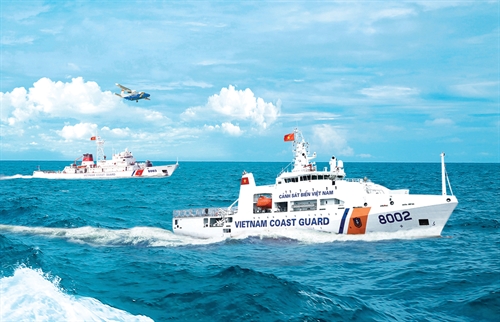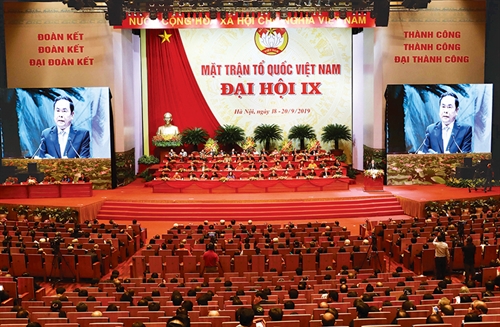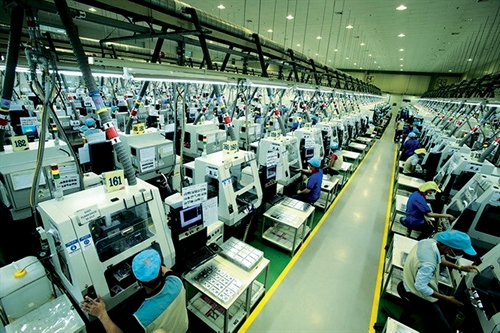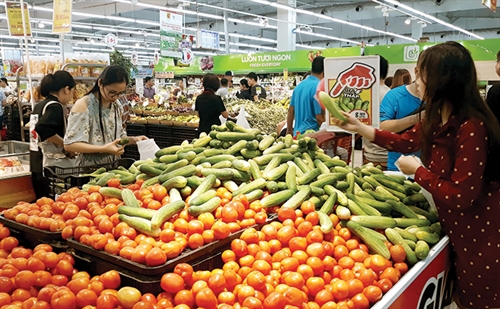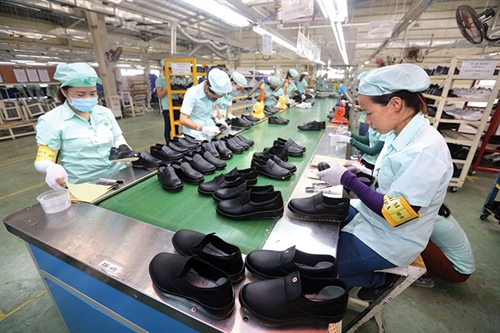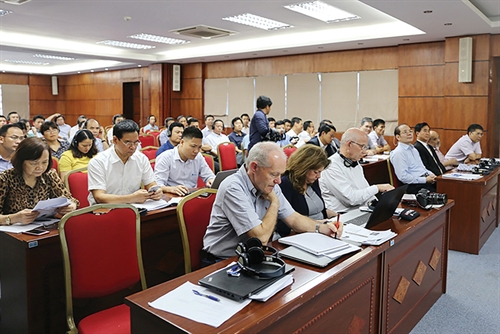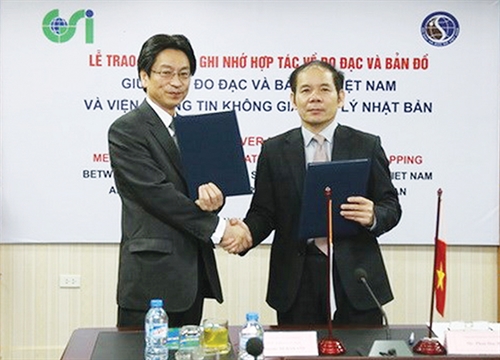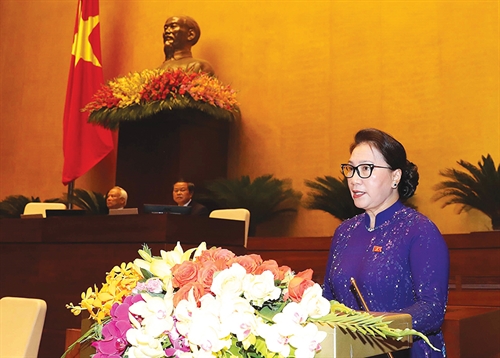November 16, 2019, is the 25th anniversary of the 1982 United Nations Convention on the Law of the Sea (UNCLOS). The Convention is one of the most important achievements of international law and the United Nations in the 20th century and continues to assert its role as the “Constitution of the seas and oceans” in the 21st century.
Nguyen Hong Thao
Member of the United Nations International Law Commission
Professor Associate in Law
Diplomatic Academy of Vietnam and Vietnam National University, Hanoi
UNCLOS and Vietnam’s maritime legal system
The UNCLOS has contributed to creating a new shape of Vietnam, a country with a long coastline of more than 3,200 km. According to the principle that “the land dominates the sea”, the coastline allows the coastal state to expand its maritime zones to the maximum extent. Vietnam has a coastline/sea area ratio much higher than the world average. Vietnam is the first country in Southeast Asia to declare a 200-nautical mile exclusive economic zone and a continental shelf and ratify the UNCLOS on June 23, 1994, before it came into effect. Vietnam is not only limited to the S-letter shape of its mainland and has become a two-part sea and one-part land country with more than 700,000 km2 of sea area (not yet including the waters of Hoang Sa (Paracel) and Truong Sa (Spratly) archipelagos).
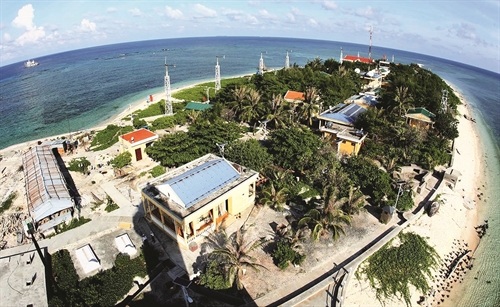 |
A panorama of Son Ca island of Truong Sa (Spratly) archipelago, Khanh Hoa province__Photo: Huy Hung/VNA |
| A panorama of Son Ca island of Truong Sa (Spratly) archipelago, Khanh Hoa province__Photo: Huy Hung/VNA |
The UNCLOS has promoted the development and improvement of Vietnam’s maritime legal system. With effect on January 1, 2013, the 2012 Law of the Sea of Vietnam is the most comprehensive legal document regulating Vietnam’s maritime issues such as definitions and legal regimes of its maritime zones, maritime jurisdiction enforcement and marine economy development. The Law’s provisions are basically consistent and compatible with those of the UNCLOS. As per the UNCLOS and the 2012 Law of the Sea, Vietnam has introduced a raft of specialized laws, particularly the 1980 Maritime Code, amended in 2005 and 2015; the 1993 Petroleum Law, revised in 2000, 2008 and 2014; the 1993 Law on Environmental Protection, amended in 2014; the 2015 Criminal Code, the 2015 Law on Marine and Island Resources and Environment; the 2003 Fisheries Law, amended in 2017; the 2018 Law on the Vietnam Coast Guard; and the 2009 Law on Militia and Self-Defense Forces.
Dozens of related documents, including Government decrees and prime ministerial decisions, can be listed below:
(i) Decree 25 of March 6, 2009, on integrated management of natural resources and protection of the environment of sea and islands;
(ii) Decree 155 of November 18, 2016, stipulating sanctions against administrative violations in the field of environmental protection;
(iii) Decree 104 of December 5, 2012, on regulations on foreign military ships visiting the Socialist Republic of Vietnam;
(iv) Decree 102 of November 29, 2012, stipulating the organization and operation of the fisheries surveillance force;
(v) Decree 146 of October 30, 2013, on the announcement of sea lanes and traffic separation schemes within Vietnam’s territorial sea;
(vi) Decree 58 of May 10, 2017, detailing a number of articles of the Vietnam Maritime Code regarding management of maritime activities;
(vii) Decree 142 of December 11, 2017, stipulating sanctions against administrative violations in the maritime field;
(viii) Decree 05 of January 16, 2017, stipulating the handling of property sunken along inland waterways and in seaport waters and maritime zones of Vietnam;
(ix) Decree 67 of July 7, 2014, on a number of policies for developing the fishery sector:
(x) Decree 162 of November 12, 2013, on sanctioning of administrative violations in the maritime zones, on islands and in the continental shelf of the Socialist Republic of Vietnam;
(xi) Decree 71 of September 3, 2015, on management of activities in maritime border areas;
(xii) Decree 41 of May 15, 2016, on licensing scientific research in the sea of Vietnam;
(xiii) Decision 103 of July 12, 2007, promulgating the Regulation on coordination in search and rescue at sea;
(xiv) Decision 1690 of September 16, 2007, approving the Vietnam Fisheries Development Strategy to 2020; and,
(xv) Decision 1037 of June 24, 2014, approving the adjusted master plan on Vietnam’s seaport system development up to 2020, with orientations toward 2030.
Development of the country’s maritime strategy
The Convention has driven Vietnam to accede to various international maritime conventions. On April 27, 2006, it ratified the Agreement relating to the implementation of Part XI of the UNCLOS, and on December 18, 2018, it became the 90th country to ratify the Convention on the Management of Straddling Fish Stocks and Highly Migratory Fish Stocks.
The country has also signed a total of 11 conventions of the International Maritime Organization, including the Convention for the Safety of Life at Sea (SOLAS), Convention for the Prevention of Pollution from Ships (MARPOL), Convention on Civil Liability for Oil Pollution Damage (CLC), Convention on Facilitation of Maritime Traffic (FAL), and Convention on Maritime Search and Rescue (SAR).
The UNCLOS provides the basis for Vietnam to develop its own maritime strategy. While the fourth National Party Congress convened in 1976 just mentioned the maritime economy as a new economy, the sixth National Party Congress identified development of the marine economy as a spearhead industry of the country: “Step by step comprehensively tap the huge potentials of the marine economy, develop the economy on the islands, dominate the territorial sea and the continental shelf, and exercise sovereignty over the exclusive economic zone.”
On February 9, 2007, the fourth Plenum of the Central Party Committee (the Xth tenure) adopted Resolution 09-NQ/TW on Vietnam’s Maritime Strategy up to 2020 with the overall goal of striving to turning Vietnam into a powerful and prosperous marine country, firmly ensuring national sovereignty and sovereign rights on the sea and islands, and making important contributions to the cause of industrialization and modernization. After 10 years of implementation of the strategy, on October 22, 2018, the eighth Plenum of the Central Executive Committee (the XIIth tenure) passed Resolution 36-NQ/TW on a new strategy, namely the Strategy for sustainable development of the Vietnamese marine economy up to 2030, with a vision toward 2045.
With such strategy, Vietnam has entered a period of sustainable use and proper protection of marine resources and environment.
The 2030-45 strategy sets out the goals of “turning Vietnam into a powerful marine nation; basically achieving the criteria of a sustainably developed marine economy; forming a marine ecological culture; proactively adapting to climate change and sea level rise; precluding the pollution and degradation of the marine environment, coastal erosion and sea intrusion; and restoring and conserving of critical marine ecosystems; and new, advanced and modern scientific achievements play a direct role in promoting sustainable maritime economy”.
The specific objectives of the Strategy are to achieve marine and ocean governance and coastal zone management indicators according to international standards, reaching the level of upper-middle countries in the world.
Most of sea- and island-related socio-economic development activities will adhere to the principle of integrated management suitable to the marine ecosystem.
Regarding the marine economy, the sea-based industries will contribute about 10 percent, and the economy of the 28 coastal provinces and cities will account for 65-70 percent of the country’s GDP. These industries will develop sustainably according to international standards, while exploitation of marine resources will ensure the restorability of marine ecosystems.
The human development index (HDI) of the 28 coastal localities will be higher than the national average and their average income per capita will be 1.2 times or higher than the average national income.
Inhabited islands will have adequate essential socio-economic infrastructure facilities, especially electricity, fresh water, communications, health care, education, etc.
Regarding marine science, technology and human resources development, Vietnam will approach and make the most of scientific and technological achievements and emerge as one of the leading countries in ASEAN in the domains of marine science, technology and human resources, with a number of sea-related scientific and technological fields reaching the world’s advanced and modern level.
Regarding the marine environment and response to climate change and sea level rise, Vietnam will assess the potential and value of important marine resources. At least half of its maritime zones will be basically surveyed in terms of marine resources and environment and presented on maps of a 1: 500,000 scale. A digitalized database on the sea and islands will be built, shared and updated.
The country will strive to prevent, control and significantly reduce pollution of the marine environment; and pioneer the region in minimizing ocean plastic waste. Particularly, in all the coastal provinces and cities, all hazardous wastes and solid household wastes will be collected and treated up to environmental standards.
All coastal economic zones, industrial parks and urban areas will be planned and built in a sustainable, ecological and smart manner, ensuring adaptability to climate change and rising sea level, and with centralized wastewater treatment systems meeting environmental regulations and standards.
Marine, coastal and island ecosystems will be properly managed and protected. Marine and coastal parks and reserves will account for at least 6 percent of the natural area of the country’s sea; and the area of coastal mangrove forests will be restored to at least the level of the year 2000.
The capacity of forecasting and warning natural disasters, earthquakes and tsunamis, observing and supervising the marine environment, climate change, sea level rise, including through application of space technology and artificial intelligence, will reach the level of the advanced countries in the region. Measures will be taken to prevent and limit the impacts of flooding tide, saltwater intrusion and coastal erosion.
According to the strategy, by 2045, Vietnam will become a powerful marine country with sustainable development, prosperity, security and safety, the marine economy making significant contributions to the national economy. It will actively and responsibly participate in addressing international and regional issues of the sea and oceans.
UNCLOS in Vietnam’s fight to protect maritime sovereignty
The UNCLOS also sets requirements for Vietnam to reform the management apparatus and strengthen its law enforcement forces at sea. In 1998, the task of developing a national plan for oil spill incident prevention and response was transferred from the Ministry of Science, Technology and Environment to the National Committee for Air and Sea Search and Rescue, helping the latter strengthen and expand its activities throughout Vietnam’s waters, meeting the requirements of new tasks. In 2007, the Ministry of Fisheries was merged into the Ministry of Agriculture and Rural Development and the Vietnam Administration of Seas and Islands was established within the Ministry of Natural Resources and Environment to enhance the approach of unified, multi-disciplinary and multi-functional management. Vietnam is the first country in the region to build a coast guard force in 1998. Through the promulgation of the two ordinances in 1998 and 2008 and the law on the coast guard in 2018, this force has become strong enough to reach out to enforce the law in all maritime zones including the exclusive economic zones and continental shelf of Vietnam. In addition to the coast guard, Vietnam has restored the fisheries surveillance force and marine militia and self-defense forces to assist the navy and the coast guard in defending the country’s maritime sovereignty, sovereign rights and jurisdiction. This policy has proven to be righteous in coordinating these forces at sea to prevent illegal activities of foreign ships and rigs from encroaching on Vietnam’s waters.
 |
Offshore fishing fleet of Ninh Thuan province__Photo: Nguyen Thanh/VNA |
| Offshore fishing fleet of Ninh Thuan province__Photo: Nguyen Thanh/VNA |
The UNCLOS has kept Vietnam updated with maritime management issues of concern to the international community, such as illegal, unreported and illegal fishing (IUU), biodiversity beyond national jurisdiction (BBNJ), building marine protected areas, and fighting against plastic waste. Vietnam’s offshore fisheries development strategy must respect FAO regulations on management and sustainable development of marine fisheries. In October 2017, Vietnam became the second country in the region to be warned with a “yellow card” by the European Union (EU) for fish caught from IUU practices. Vietnamese fishing vessels have been also subjected to tough measures like destroying ships, arresting fishermen and imposing fines, thus causing tensions in diplomatic protection and regional relations. On the other hand, Vietnam also faces illegal fishing activities of foreign vessels in its waters.
The 2017 Fisheries Law with new regulations on fighting against IUU practices is expected to help Vietnam overcome the above difficulties.
The Convention also extends Vietnam’s interests beyond the South China Sea. Vietnam has opportunities and needs to actively participate in the development of the Convention on the Conservation and Sustainable Use of Marine Biodiversity beyond National Jurisdiction. Vietnam should also be prepared to join the club of countries that exploit the seabed and ocean floor. Vietnam has had a plan to build 15 marine protected areas and it should actively promote the expansion of others. As Vietnam is ranked among the top five countries in the world in generating plastic waste and affected by rising sea levels, it needs to actively cooperate with countries in the region and around the world to mitigate these risks.
The UNCLOS is an effective legal instrument for Vietnam to protect its maritime sovereignty, sovereign rights and jurisdiction. The dispute settlement mechanism created by the Convention has increasingly shown its superiority. Adhering to the provisions of the Convention, Vietnam is the most successful country in the region to resolve maritime disputes with the most diverse tools. It has creatively applied the principle of fairness in the delimitation of the exclusive economic zones and continental shelves with Thailand in 1997, and the Gulf of Tonkin with China in 2000, the delimitation of the continental shelves with Indonesia in 2003; joint development with Malaysia in 1995, joint development and joint fishing cooperation with China in the Tonkin Gulf in 2004, and Cambodia in 1982, and is conducting negotiations on the maritime delimitation for the area outside the mouth of the Tonkin Gulf or the delimitation of the exclusive economic zones with Indonesia.
Vietnam has lent its support to the jurisdiction of the Arbitral Tribunal established under Annex VII to the UNCLOS in the Philippines’ case against China in the South China Sea in 2016 and demonstrated its willingness to take all peaceful measures to resolve maritime disputes in the South China Sea with neighboring countries. The provisions and spirit of the Convention are also clearly demonstrated in the formulation and implementation of the Declaration on the Conduct of the Parties in the South China Sea (DOC) and in the negotiation process of the Code of Conduct of the Parties in the South China Sea (COC).
The UNCLOS enhances the opportunity for Vietnam to expand its cooperation capacity in marine scientific research, resource assessment, environmental protection and joint patrols in the Tonkin Gulf, Gulf of Thailand and coordination in crack down pirating. Vietnam has also improved its search and rescue capabilities, helping other countries in the search for Malaysian MH 370 aircraft which disappeared in 2014 or the rescue of 22 Filipino fishermen in distress off the Spratlys islands in 2019. It also received support from other countries in the search for its fishing boats struck by storms in the South China Sea or for the Su-30 fighter jet and CASA aircraft crashed in its waters in 2016.
For the past quarter of a century, the UNCLOS has provided a comprehensive legal framework for the peaceful, cooperative and sustainable utilization of seas, oceans and marine resources. The Convention asserts that the issues of the seas and oceans are closely interrelated and must be addressed as a whole. The effective and comprehensive implementation of the provisions of the Convention will bring humankind through challenges to build a green, peaceful and prosperous planet. The Convention is an indispensable legal tool for developing countries, including Vietnam, in the struggle for a fair maritime legal order and sustainable development.- (VLLF)

